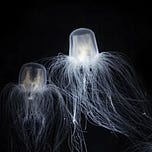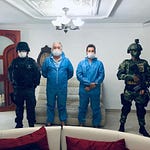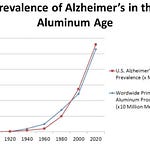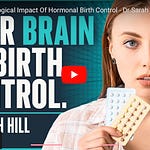For new readers: HERE are links to download my CV, ebooks, the best recent posts, and how to search my archives. HERE are links to OSR, DMSO, and chlorine dioxide products, contact information for experienced provider Kerri Rivera, and information on how to buy drugs from foreign pharmacies. Thank you for reviewing Judas Dentistry; the direct link is HERE. Finally, if you have a good story or are an expert who wants to be interviewed, please get in touch with me at RobertYohoAuthor@gmail.com.
Turritopsis Dohrnii is a jellyfish that can live for over 1000 years. Its telomerase mutations preserve its telomeres. Credit: James Gilbertson’s article below.
1. How to enjoy jetlag for an entire month
I flew across the Pond to visit a European time zone eight hours later than Los Angeles. Although the following seemed like a good idea at the time, you can imagine how it worked out.
I drank alcohol and took sedatives before bedtime to sleep.
I woke up every morning with coffee, then pounded it all day to stay up.
I slept whenever I wanted.
It was cloudy, so I stayed inside.
This article is what to do instead.
2. Melatonin
From Hormone Secrets:
Melatonin is a harmless but potent antioxidant or clean-up hormone with many benefits. It is taken at bedtime and improves sleep. It also helps mood, migraines, energy, and the immune system. Dentists say that patients taking melatonin have improved gum and mouth health. It has favorable effects on both breast and prostate cancer.
Travelers use it to reset the sleep-wake cycle. When they enter a new time zone, they take up to 100 mg on the first night. Melatonin has also been used to help addicts stop Valium and related sedatives. It decreases nighttime urination for men with large prostates.
Those taking melatonin may see their grey or white hair gradually change to the original color. As this happens, they get dark roots and white tips, the reverse of what happens to dyed hair as it grows out. I have spoken to people who experienced it. It may mean their health is getting better.
Compounders make slow-release melatonin that lasts six hours or longer as prescriptions. These are also available over-the-counter for purchase at either Nutrascriptives.com or LifeExtension.com. The melatonin capsules supplied by compounders are 1, 2, 3, and 5 milligrams and higher. Women start at 1 mg and men at 3 mg. Dosage is increased until good sleep or side effects occur. The average effective sleep dose for men is 9 to 30 mg and 1 to 30 mg for women. There is no known dosing limit, and some people need 100 mg. 2024 comment: The following reference says additives in these produce side effects.
The only problems with melatonin are sleepiness and vivid dreams. Most people do not mind these since they are taken at bedtime, although a few become agitated and cannot tolerate it. Several weeks may go by before the complete response occurs. Some people must take melatonin several hours before bed because it has a slow onset for them. These effects are individual.
I wanted dark hair, but melatonin gave me restless sleep, so I dye my hair. 2024 note: Many dyes are toxic, and hairdressers get more cancer and have shorter lifespans because of them. I use nontoxic cellophane dye, which washes out in a few weeks.
KEY INFO: High-dose melatonin improves health
Frank Shallenberger, MD, spoke about this at a Riordan Clinic event.
This is a summary, but the lecture HERE has more and is likely the best part of this post.
Melatonin has been studied many times in animals and humans; it has no known toxicity, and side effects are rare. Pharmaceutical-grade melatonin is synthesized, but the substance does occur in plants. It does not alter the levels of other hormones and is thought to be a mitochondrial stimulant. It is one of the best antioxidants discovered and is more potent than glutathione. Its effects inactivating free radicals happen in a cascade event, making it more potent than other antioxidants.
Melatonin is an effective anti-cancer drug that reduces the overall chance of death by 40 percent. Higher doses work better, and Shallenberger’s Stage 4 patients are told to take 50-60 mg four times a day. This works for many cancers but is particularly good for breast and prostate. It halts their progress, the goal of cancer treatment.
The rest of Dr. Shallenberger’s patients, including people with less serious cancers, are told to take 180 mg at bedtime. He views melatonin as the top antiaging supplement.
If you take high-dose melatonin, you will not get dementia, Parkinson’s, or macular degeneration.
Melatonin offers radiation protection; 300 mg should be taken two hours before a CT scan.
Only five percent of patients report side effects with Shallenberger’s protocol. Drowsiness or vivid dreams are sometimes seen in those who take the time release or tablet form, so only capsules or the powder are recommended. These problems may be due to additives. With the melatonin sources listed below, issues are rare.
Yoho: I went to bulksupplements.com and bought 500 grams for $132, enough to share with my friends. I plan to use my 1/8 teaspoon scooper from the OSR every night to take 200 mg and will let you know how it goes. I need to find a sensitive scale to ensure I get the right dose.
Dr. Shallenberger’s work is based on the most prominent melatonin researcher, Dr. Reiter. HERE is an interview.
Shallenberger also discusses how solar cycles influence sleep and the importance of avoiding any light except red when getting up to go to the bathroom. He also recommends sleeping in a room so dark that you cannot see your hand in front of your face.
3. Is Shift Work Shortening Your Life?
Author: emergency physician James Gilbertson | Aug 1, 2024. The references are in the original at the above link. Abridged for readability.
Social media headlines and journals have highlighted the abysmal life expectancy of emergency room doctors. Dr. Ken Milne, the creator of The Skeptics Guide to Emergency Medicine, recently wrote that ER physicians have significantly shorter lives than any other specialty. From cancer to cardiovascular disease and mental health challenges, emergency physicians face risks that affect their longevity and well-being.
Yoho comment: James must be plotting his escape from emergency physician Alcatraz, as I did many years ago.
Brayne et al. (2021) in Lifestyle Medicine[1] analyzed over 8,000 physician obituaries published in the BMJ, extracting specialty, age, and cause of death. Of the submitted entries, ER doctors’ mean age of death was 58.7 years. Cancer was the leading cause of death (43%), followed by a tie between accidental injury (14%) and respiratory disease (14%).[1] For reference, the Canadian national average for cancer is 25% of deaths [2].
This study’s numbers were too small to be sure because only 43 ER doctors were included, but the conclusions worried us anyway. Insurance companies and actuaries have this data, but it is not readily available to the public. Yoho: I have not found other studies.
All shiftwork is harmful
In 2007, the International Agency for Research on Cancer concluded that shift work is a probable Group 2A carcinogen.[5] Other risks in this category include DDT, lead exposure, strains of HPV, and working in a petroleum refinery.[6] [7] Breast, prostate, and colorectal cancer have been implicated.
In 2021, the US National Toxicology Program looked at over 78,000 women who worked rotating night shifts and classified night shift work as a known carcinogen for breast cancer[8]. This is the same category as asbestos, HIV, and tanning beds.[6] The study was a subset of the enormous Nurse's Health Study. For pre-menopausal women, the risk of breast cancer after working 1 – 14 years on rotating nights was increased by 23%. After 20 years of nights, the risk of breast cancer was 66% higher than in the control group.
In males, there are similar links for prostate cancer. One systematic review of almost 2.5 million males found a 24% increased rate of prostate cancer in regular night-shift workers, with a suggestive dose-response relationship.[10]
In 2019, a Cochrane protocol was developed to help collate data for studies examining the effects of night shift work for over 16 types of cancers. The goal was to better identify the types of night shift work linked to cancer and the dose-response relationship. For example, is a 16:00 – 01:00 shift harmful, or just the 00:00 – 08:00 shift? And how do cumulative years of shiftwork affect risk?
The following patterns were thought to produce the highest risk of cancer by the Centers for Disease Control and Prevention (CDC):
Beginning night shift work in early adulthood (such as before the age of 30)
Night shift work of at least 3 hours between midnight and 5:00 AM
Frequent night work (3 or more nights per week)
Long-term night shift work (10 or more years)
Shift work is related to cardiovascular disease.[12] A Canadian meta-analysis published in the British Medical Journal (BMJ) 2012[12] analyzed over 2 million shift workers from 34 independent studies. They found that shift workers have a 23% increased risk of myocardial infarction and a 5% increased risk of ischemic stroke, independent of socioeconomic status. (Wealth improves longevity)[13].
Shift workers suffer increased rates of mental health disorders, including depression, anxiety, insomnia, suicidal ideation, impaired cognition, and substance use.[14] The following is from a structured 2020 review of 23 independent studies.[14]
More than one in four shift workers may suffer from depression or anxiety[15].
Shift workers have an 8-fold increased risk of suicidal thoughts[14].
Shift workers have higher rates of substance abuse, including sleep-promoting drugs, wake-promoting drugs, alcohol, and smoking.
Shift workers experience higher levels of cognitive impairment in middle and older age.
Whether you are an early bird or night owl affects mental health; early birds tend to show a lower tolerance for shift work, with increased cognitive and mental health impairment.[14]
The following mechanisms suggest ways to mitigate the health impacts. Shiftwork disrupts circadian rhythms. The pineal gland secretes melatonin and suppresses production during bright light exposure. Melatonin is involved in the sleep-wake cycle and human energy metabolism, immune function, DNA repair, and tumor suppression. Melatonin receptors are found throughout the body. [16] It is suppressed in shift workers.
Melatonin is an antioxidant and free radicle scavenger (Lingas, 2023). It enhances natural killer cell function and affects lymphocyte proliferation. Melatonin decreases blood estrogen. This is one of the theories behind higher rates of breast cancer in shift workers.[9] Without melatonin inhibiting estrogen, women have higher circulating estradiol levels, leading to increased growth and proliferation of hormone-sensitive cells in the breast. Researchers have found higher levels of receptor-positive breast cancer, including ER+, PR+, and HER2+ in shift workers.[17]
Yoho note: Estrogen is not the problem. Breast cancer risks decline below those of untreated women if progesterone is adequately supplemented (Hormone Secrets).
On average, night and shift workers who work early mornings sleep 2-4 hours less than their daytime counterparts.[18] Think about the last time you switched to a night shift and then back to days. Do you think you averaged 8 hours of sleep for every 16 hours awake?
Even modest sleep deprivation, especially long-term, leads to marked impairment in immune function. [19]
Increased heart disease rates may be partially attributable to higher circulating cortisol and norepinephrine levels and other critical neurohormonal changes in shift workers.[19] For example, the normal nocturnal prolactin surge is decreased, whereas insulin shows an increased acute response to glucose challenges, and insulin resistance develops. When working overnight, leptin, the body’s satiety hormone, is reduced. These changes can increase blood pressure and insulin resistance and cause overeating and metabolic syndrome.
The original WHO survey summarized studies showing telomere shortening in shift workers—a hallmark of aging.[5] A dose-response relationship between telomeric shortening and cardiac rhythm disruption has been demonstrated in animal models.[20]
Shift workers live shorter lives on average. They face higher risks of cancer, cardiovascular disease, and mental health issues. Their circadian rhythm disruption causes melatonin interference, endocrine changes, sleep deprivation, and telomeric shortening. They should prioritize sleep, exercise, and nutrition. Living With Shiftwork, Part 1 and Part 2 from the Ottawa Handbook of Emergency Medicine, summarizes best practices to live longer. Yoho: All true, but quitting emergency medicine is the only way to escape the waking nightmare and get back to sleep.
4. Pilots’ timeshifting and other risks damage their health.
I am taking informal flying lessons. Don’t say anything—I’ve already been hammered repeatedly.
My internet search suggested that pilots have long lives, but you know how Google lies. My flying friends told me that data about pilots’ shortened lifespans is suppressed to avoid airline liability. I did find the following:
Pilots face considerable risks in their jobs, which resulted in a fatal injury rate of 48.6 cases per 100,000 full-time equivalent workers in 2017. The fatal injury rate among all occupations nationally in 2017 was 3.5.
Health in the Skies: A Narrative Review of the Issues Faced by Commercial Airline Pilots is a report about pilots’ obesity, diabetes, depression, jetlag, and other health issues.
Due to their work, pilots have drowsiness, insomnia, exhaustion, irritability, and diminished cognitive performance.
Physical factors in the cockpit, including prolonged seating postures, lifting, and whole-body vibration, impose postural strains on lumbar spines and can result in lower back pain.
Prolonged seated immobility during long-haul flights is a well-known risk factor for venous thromboembolism.
Compared with the general population, airline pilots had a high prevalence of overweight and obesity, metabolic syndrome, type 2 diabetes, insufficient physical activity, elevated psychological fatigue, insufficient fruit and vegetable intake, and regular alcohol consumption.
They have a high rate of malignant melanoma, which may be due to radiation exposure.
KEY: Small aircraft “general aviation” pilots have a .84 percent crash-and-die rate per 100,000 flight hours. Since they fly around 150 hours a year, I calculated their ten-year fatality rate using claude.ai. I could have solved this problem myself, of course. Of course. Here’s Claude:
Given information:
Crash-and-die rate: 0.84 per 100,000 flight hours
Flight hours per year: 150
Time period: 10 years
Calculate total flight hours in 10 years: 150 hours/year × 10 years = 1,500 hours
Convert the crash-and-die rate to per hour: 0.84 / 100,000 = 0.0000084 per hour
Calculate the probability of survival for one hour: 1 - 0.0000084 = 0.9999916
Calculate the probability of survival for 1,500 hours: (0.9999916)^1500 ≈ 0.9875
Calculate the fatality rate: 1 - 0.9875 = 0.0125
Therefore, with 150 flight hours per year, the fatality rate after ten years is approximately 0.0125 or 1.25%.
I initially encountered this data when I read James Fallon’s Free Flight several decades ago. This death rate is about that of a coronary artery bypass surgery—if you have a top surgeon. Less skilled surgeons may kill 7 percent. Another benchmark for comparison is that emergency appendectomies only kill one in a thousand.
Despite all this, pilots have among the highest job satisfaction of any profession. I can see the appeal—it sounds like as much fun as climbing. Am I sick or what? Maybe it is my mercury.
5. Zaid Dahhaj of the Circadian Classroom Substack gives us the bottom line.
Jetlag proves that traveling is physically stressful. We didn't evolve as hunter-gatherers to travel by plane.
Does this mean that you should never travel if you want to be healthy? Of course not.
The human body is resilient, but frequent travel has consequences. It increases the risk of developing chronic disease, especially as you age. However, we are not doomed to this if we respect our body’s solar needs.
How does this work?
Traveling in a metal tube at a high altitude bathed in non-native EMF and artificial light affects your mitochondria, non-visual photoreceptors, and melanin stores. It disrupts circadian biology, the keystone pillar of health that controls every cell and organ. Airports are terrible for the same reasons.
Mitochondrial dysfunction is at the root of all chronic diseases. These cells exist in the cytoplasm, outside the nucleus, of each of our body’s cells. They are thought to be bacteria that entered and integrated with the system millions of years ago. They are 20 percent of each cell by weight and have separate, more complex genetics than the body’s.
In THIS lecture, Dr. Doug Wallace says that centralized medicine refuses to recognize the distinction between nuclear and mitochondrial DNA and that most of the money is spent studying the nuclear genome at the expense of the mitochondria. Nevertheless, the mitochondrial energy pathways that show how solar power works through the body’s system are now known.
Universal strategies for reducing travel stress, re-aligning your circadian rhythm, and avoiding jet lag:
Use the Timeshifter app HERE. This is designed to help people manage and overcome jet lag by creating personalized sleep and light exposure schedules. It was developed using the latest research on circadian rhythms and sleep science. Key features include personalized jet lag protocols, using light correctly, and sleep schedule adjustments.
Use methylene blue during travel to improve energy production and protect the mitochondria. Methylene blue quality is variable; yours must come from a reputable company, and I use Meraki Medicinal. Methylene blue is powerful. It has antioxidant properties. It is neuroprotective, anti-inflammatory, improves hemodynamics, and is anti-fungal, anti-parasitic, anti-viral, and anti-microbial. The research backing this is available on PubMed and other databases.
Wear dark-lensed blue-light-blocker eyeglasses in airports and planes, even during the day. (Zaid recommends the ones from Midwest Red Light Therapy. They are $40 a pair. Buy the dark-lensed ones.) People commonly assume that blue light is acceptable during the day, but this is wrong. Artificial light is always toxic. We are adapted to the sun's full spectrum, which is perfectly balanced for our biology. When a high-intensity wavelength like blue is present without red and infrared, biological systems have acute and chronic problems. Look at the difference in wavelength distribution between daylight from the sun and artificial light:
Cover most of your skin when traveling. It senses light and has a circadian role. Exposure to the wrong type of light (artificial) at the wrong time (after sunset) is detrimental. The skin contains non-visual photoreceptors tuned to specific wavelengths of light. These “opsins” are light-sensing proteins, such as melanopsin and rhodopsin. Melanopsin, for example, is tuned to blue light within the 420-480 nanometers range.
After you land, maintain a grounding routine, religiously watch the sunrise and sunset, and avoid artificial light after sunset. These practices produce the most benefits for avoiding jet lag, maintaining optimal health, and protecting your metabolism while traveling.
KEY INFO: A study about living underground for several months convinced me of grounding's value.
The test subjects who lived for a month in an underground bunker, wholly removed from exposure to natural daylight, could maintain an internal synchronization to a day/night rhythm even without sunlight.
Test subjects who lived for a month in an underground bunker shielded from the earth's DC energy (shielding over 99% of the earth's natural EMFs) became internally desynchronized, unable to maintain a consistent day/night rhythm.
In repeated experiments with 100+ test subjects, the only ones who became internally desynchronized were those shielded from the earth's DC energy pulse.
The ones who were only shielded from the sun while connected to the Earth’s DC energy didn’t experience this destabilization of their circadian rhythm.
To use both forms of your body’s natural melatonin, align yourself with the light and dark cycle. I do not like melatonin supplementation for several reasons. I prefer to maximize natural melatonin production within the body. There are two forms of melatonin: subcellular and circulatory. The sub-cellular form is made by the mitochondria during the day in response to near-infrared light (NIR) from the sun. The pineal gland produces the circulatory form after sunset in response to a dark environment. Ninety-five percent of all human melatonin is the subcellular, daytime kind, and only five percent comes from the pineal gland at night.
Yoho note: Zaid is a young dude who probably has not consumed enough fluoride water to calcify and ruin his pineal gland. Just as his body still makes melatonin, he likely has enough testosterone to jack up his levels after a few deadlifts. Older people should consider supplementing both.
Zaid’s practical lessons
Insight #1: Get outside as much as possible and put sunbathing in your routine to maximize sub-cellular melatonin. Among the benefits of being outside is the exposure to near-infrared light reflected by plants. This happens because of the structure of their leaves:
Chlorophyll absorption: In the visible light spectrum, chlorophyll in plants absorbs blue and red light for photosynthesis while emitting green light that makes them appear green. Chlorophyll doesn't absorb light in the near-infrared spectrum.
Leaf structure: The internal structure of plant leaves, particularly the spongy mesophyll layer, causes NIR light to scatter and reflect. This scattering occurs because NIR light penetrates the leaf but isn’t absorbed by chlorophyll or other pigments.
This ability to reflect NIR light helps plants regulate temperature; too much sunlight absorption could overheat the leaves. This is why NIR imaging is often used in remote sensing to monitor plant health.
I urge you to implement sunbathing into your routine, especially after traveling. Direct midday sun exposure on bare skin is where you see the true power of this practice. If you're worried about burns or don't think you can tan, read my article on how to build a tan HERE.
Expect to feel tired after sunbathing. You are experiencing a dramatic increase in mitochondrial melatonin along with an increase in beta-endorphin. This hormone is stimulated by UV light. It activates the pro-opiomelanocortin (POMC) system, an opioid peptide that creates relaxation and euphoria. This can be calming and somewhat sedating, leading to fatigue post-sunbathing.
Insight #2: Block toxic artificial light after sunset while maintaining darkness and using minimal circadian-friendly red lighting to maximize the circulatory form of melatonin. More on that is HERE.
Avoid traveling if you can, but if you must, use this framework to reduce the chronic stress associated with this lifestyle. It all comes down to appropriately aligning yourself with the light and dark cycle. Most people avoid the sun, don't get enough of it, spend too much time indoors, and live under toxic artificial light 24/7. If you do better, your health will improve even if you travel.
These practices reduce jet lag dramatically.
References
Jack Kruse has had a considerable influence on Zaid. HERE is one of his three-hour rants (Did I write that? I meant podcasts.) He is a retired neurosurgeon. I hate neurosurgeons. (My fingers got away from me again. I meant to write that he has a huge ego.) Among many other things, he speaks about the Cabal attempting to destroy our health by promoting blue light at the expense of more natural spectrums. If you “dive into” him, as the Gen Xers would say, try not to get discouraged. Unlike the “vaccines,” which are killing people right and left, the things Kruse is worried about have no proven effect on mortality.
HERE is an Unbekoming post on EMF, sunlight, circadian rhythms, melatonin, mitochondria, grounding, and much more. He has further links.
Zaid’s website is zaidkdahhaj.com
Disclaimer
This is not medical advice. Find a licensed provider for that. I can write honestly about these issues because I am not.
I abridged the sources for this essay to improve the reader's experience. I am responsible for the errors.


















Share this post